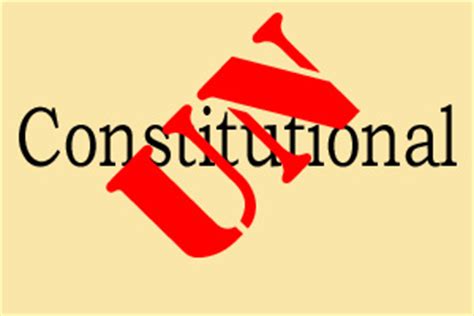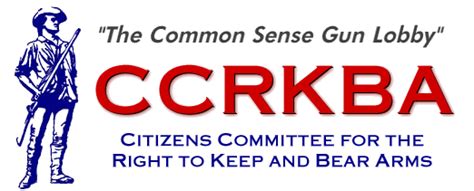
Why Concealed Carry May Only Be The Beginning
Gun control advocates frequently point out that lower courts, state and federal, have upheld many gun control laws, such as “assault weapons” bans, restrictions on magazine capacity. What they don’t talk about is the little detail that the courts who have rendered these decisions have done so by treating the 2nd Amendment as a second class right. They have ignored “text, history and tradition”. When that fails, they could not uphold these laws using the standard applied to nearly every other right protected in the Bill of Rights (Strict Scrutiny), they have used a much lower standard (Intermediate Scrutiny).
What Is Strict Scrutiny?
From Wikipedia:
U.S. courts apply the strict scrutiny standard in two contexts:
1) When a fundamental constitutional right is infringed, PARTICULARLY THOSE FOUND IN THE BILL OF RIGHTS and those the court has deemed a fundamental right protected by the Due Process Clause or "liberty clause" of the 14th Amendment, or
2) When a government action applies to a "suspect classification", such as race or national origin.
If these lower courts applied strict scrutiny, most (but not all) gun laws – both state and federal – simply would not survive, because the test is so strict (no pun intended). The test has two parts:
1) Government must be “compelled” to regulate the right. In other words, government must prove that they have no choice but to act. This is a very difficult bar to clear – but that is not all.
2) Even if government proves that there is a compelling need to regulate, this does not give them ability to do whatever they want. They also must prove that their method of regulation impacts the right as little as possible.
It doesn’t take a legal genius to see the impact of strict scrutiny on blue state gun laws. Many simply would not pass the first test. For instance, it would be basically impossible for California to prove that it has a “compelling need” to regulate some semi-automatic rifles when the vast majority of states do not do so. Even if they were somehow pass the first test, their total ban is certainly not the least intrusive solution available to them.
Why Gun Control Advocates Are Freaking Out
"This case signaled not only the court's growing hostility to restrictions on concealed carry—the subject matter of today's case—but reflects the view of some justices that there are too many gun control laws and that we need to start striking gun control laws down," UCLA law professor Adam Winkler told Newsweek.
"A significant portion of the gun safety movement's current agenda is likely to come under attack in the coming years," Winkler added. "I think bans on assault weapons and bans on high-capacity magazines are ripe for the new Supreme Court, with its newly invigorated Second Amendment, to strike down."
What has gun control advocates such as Prof. Adam Winkler, concerned, are comments and questions from the justices indicating that a majority of justices may use this case to effectively order lower courts to use “history, text and tradition” to decide 2A cases. When that fails to provide a solution, for instance in the case of assault weapons bans and magazine limits, SCOTUS appears poised to order lower courts to apply the Strict Scrutiny test. This would be consistent with current constitutional law as applied to the Bill of Rights.
In fact, even Justice Kagan made comments that alarmed gun control advocates:
“It seems completely intuitive there should be different gun regimes in New York than in Wyoming … but it’s a hard thing to match with our notion of constitutional rights generally,” Kagan said. “We would never really dream of doing that for the First Amendment.”
When even Justice Kagan, clearly a member of the liberal wing, recognizes that it is difficult to treat the 2nd Amendment differently than the 1st, it is abundently clear that gun control is in trouble.
Furthermore, Chief Justice Roberts appears ready to join the pro-gun rights majority. Even Vox conceeds this:
“While Chief Justice John Roberts appeared to disagree with most of his fellow conservatives about how the Court should approach Second Amendment cases, his disagreement appears to be largely academic. He also appears likely to strike down New York’s law.”
The Gun Grabber’s Worst Nightmere
While no one knows for sure what will happen, there is one possibility that causes gun control advocates to lose sleep: A 7-2 decision throwing out the New York law, and requiring lower court to follow “History, text and tradition” and Strict Scrutiny in all 2A cases.
If the same ruling were to come down as a 5-4 decision, the left would respond by declaring that the high court was “sick” and that it needs to “fixed” by expanding and packing it. However, if Roberts and Kagan side with the other five justices, this becomes much, much harder. There simply won’t be much they could really do besides complain.
While only the New York law (and similar laws in states like California) will directly affected by the ruling, if the ruling sets a high standard for review for 2A cases, as it appears they will – many other laws will undoubtedly fall in the next few years.
This is why Prof. Winkler has told gun control advocates that they should look for solutions for gun violence that do not involve stricter regulation of firearms.
Rev. R. Vincent Warde
11/8/2021










